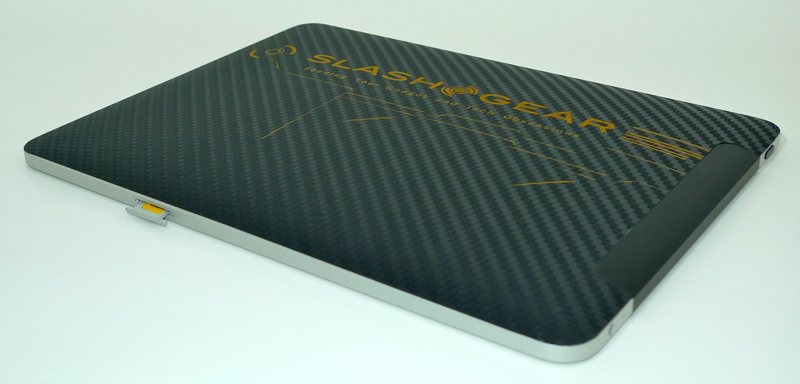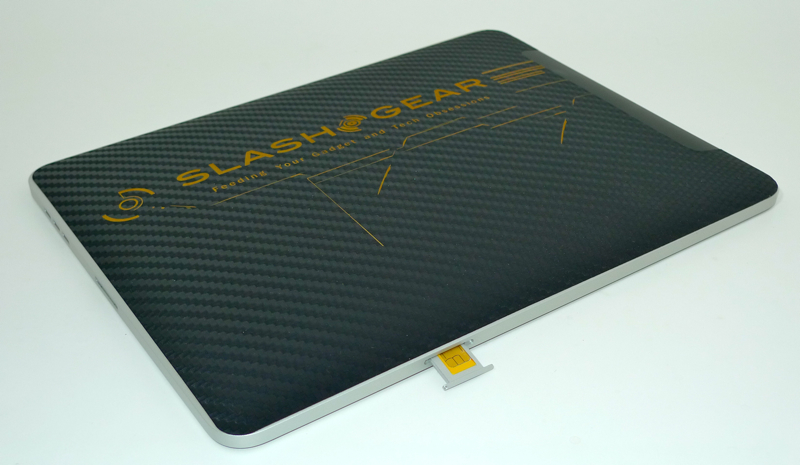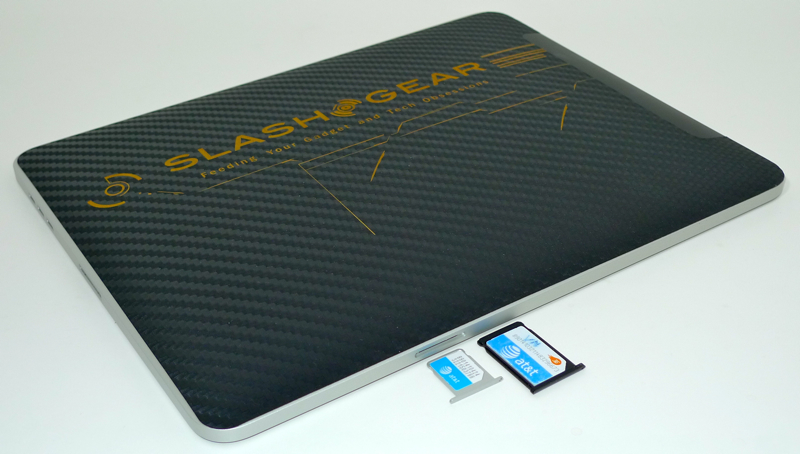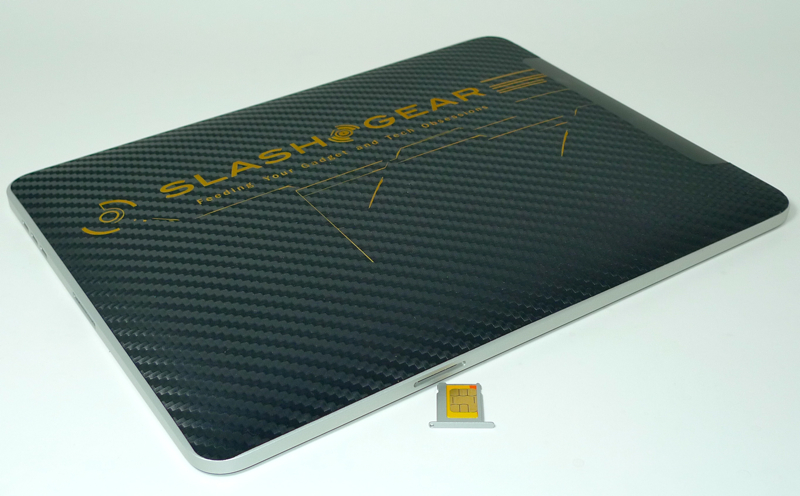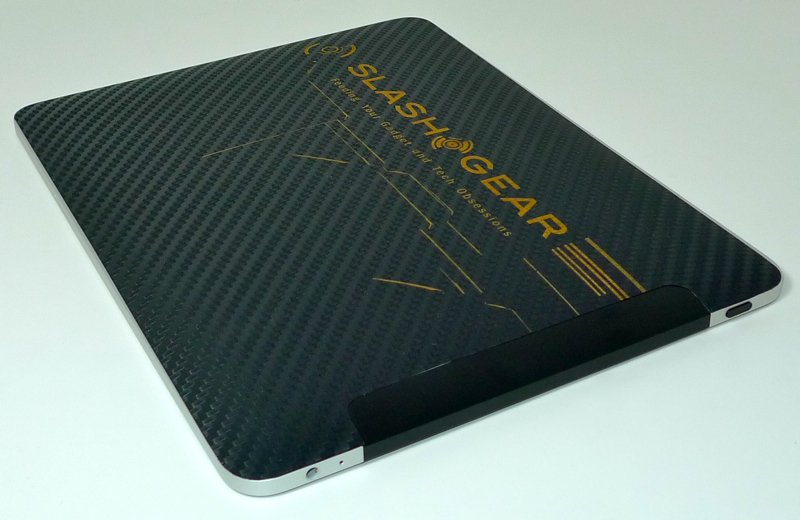iPad WiFi + 3G Review
With over 1m iPads sold, it's looking like Apple's tablet gamble has paid off. Ironically the milestone was reached on the same day that the iPad WiFi + 3G debuted, the 3G-enabled version of the touchscreen slate that promises to set you loose from WiFi hotspots. After the cut, check out the SlashGear review, complete with MiFi benchmarking and some surprising battery findings.
For the most part, the iPad WiFi + 3G (which from now on we'll just refer to as the iPad 3G for the sake of brevity) is identical to its WiFi-only sibling. Both have the same capacitive touchscreen display, slimline aluminum body, iPhone OS 3.2 and either 16GB, 32GB or 64GB of flash storage. We'd recommend reading our iPad WiFi review for a full overview of the strengths and shortcomings of the Apple tablet, since here we'll be concentrating on what sets the iPad 3G apart.
You could argue whether the most noticeable difference between the iPad WiFi and the iPad 3G is the extra cost of the 3G modem on your wallet or the new antenna panel on the back. The flipside to AT&T's reasonably low priced data tariffs – more on which in a moment – is that the 3G hardware itself isn't subsidized. Each iPad 3G model costs $120 more than its WiFi counterpart, though the triband (850/1900/2100) modem is supplied carrier unlocked.
Past the financial bump, it's arguable how much the antenna panel mars the iPad's clean looks. As with the iPhone, the cellular antenna can't do its thing with metal in the way, and so there's an oblong chunk of black plastic along a portion of the top back and edge of the tablet. Otherwise, the only external difference is the microSIM card slot, midway down the side of the iPad, and which uses a SIM tray rather than some sort of door or flap. As with the iPhone, Apple supply a paperclip-style SIM tray removal tool.

Though the 3G modem is unlocked, Apple's well-publicized choice of a microSIM rather than the more common GSM miniSIM means swapping the card between your phone and your iPad isn't as straightforward as it could be. The AT&T microSIM Apple provide is preloaded, but you can trim down a miniSIM from another carrier to fit and slot that in instead. Meanwhile multiple carriers outside of the US have announced that they'll be offering microSIMs for iPad use, so frequent travelers will likely be able to pick up a local card and use that instead of roaming. That's useful, since international data is priced at $24.99 for 20MB, $59.99 for 50MB, $119.99 for 100MB or $199.99 for 200MB.
In the US, AT&T offer two packages (though of course you can also use the iPad 3G on WiFi only). $14.99 gets you 250MB of data and $29.99 gets you unlimited data; both plans are contract-free and you can activate and deactivate them as often as you want. For instance, if you wanted to have 3G service while travelling for two months out of the year, you could do so and pay $60 for unlimited data for that period. If you had to call AT&T every time that would quickly become tedious, so we're glad to see Apple implementing an on-device data setup system which bills a credit card (as long as you have a regular, not PO Box, US mailing address) and gives warnings if your 250MB data allowance is running short. It's worth noting that the 250MB expires 30 days after activation, so you can't pay $14.99 for a chunk of data and then ration it out over several months.
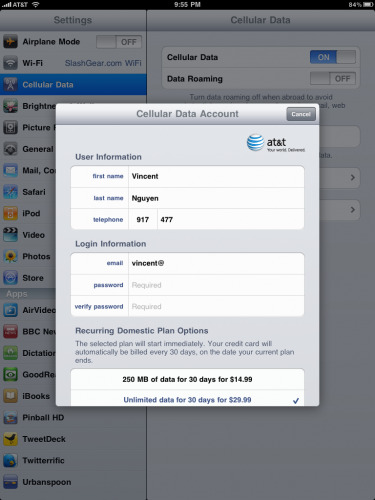
The affordability of the AT&T iPad plans will depend on what other cellular contracts you're signed up to. Viewed in isolation, the unlimited tariff is significantly cheaper than, say, a MiFi plan; however, given the iPad 3G is limited to data not voice, it's more likely to be an addition rather than a replacement to whatever you're currently paying for your cellphone. If the latter includes a smartphone data plan and the usual line rental – for an iPhone 3GS, for instance – that adds up to a fair amount. It's frustrating that those already under the Apple umbrella aren't rewarded with a discount, but that seems to be the price you pay for the flexibility of AT&T's iPad plans.
Happily, if you do choose to switch on 3G data, you can be rewarded with some excellent performance that, in our experience, soundly bests the iPhone 3GS' abilities and does surprisingly well against Sprint and Verizon's EVDO Rev.A networks. For full details, check out our comparison video where we pit the iPad 3G against the iPhone 3GS together with the Verizon and Sprint (see remarks below) MiFis.
iPad WiFi + 3G vs iPhone 3Gs speedtest
[vms 5d6a1a87373dffa53dbe]
iPad WiFi + 3G vs Verizon MiFi speedtest
[vms 0d4eacb9a3e6e53e5448]
Results from Sprint MiF doesn't perform as well as Verizon so for your sanity, I've omitted the video from this review since it's the same thing.Speed test via Speedtest.net results (kbps):

Now, it obviously goes without saying that your experience with the iPad 3G depends on the strength of the AT&T network around you and, as the iPhone 3GS has shown, that network can prove patchy and frustrating. It's also worth noting that, while T-Mobile USA GPRS and EDGE will work on the iPad 3G, you won't see WCDMA/UMTS as it lacks the necessary band support.
Also frustrating are the software limitations placed on 3G use in data-heavy applications. This is predominantly the case then trying to watch streaming video; YouTube and Netflix default to an unimpressively low bitrate, which at times can leave the video almost unwatchable. Elsewhere, other apps simply slice out 3G support altogether, with a pop-up message saying that only WiFi streaming is supported. The limitation is, we're told, a part of Apple's iPhone OS streaming policy designed to reduce impact on the cellular network, but the end result is far more jarring on the iPad's 9.7-inch screen that it is on a considerably smaller iPhone display.
A side-effect of the 3G modem is its integrated GPS receiver, which augments the regular iPad's WiFi triangulation mode of positioning with a true satellite fix. Functionally this is the same as before – tapping the location icon in Google Maps zooms in to your position – but you get a pulsing blue dot rather than one surrounded by a hoop of location ambiguity; a second tap turns on the digital compass. We found the initial GPS fix to be a little slower than when we compared it to the iPhone 3GS, but once it had a hot fix it seemed to rediscover location quicker after having been indoors or in tunnels. The thought of using an iPad 3G as a PND alternative while driving seems a little odd, but for navigating a new city the true GPS would make a significant difference to accuracy.
One of our biggest surprises with the iPad WiFi was its battery life, which we – and many others – found to exceed the ten hours Apple predicted. It now looks like those predictions may have partially been to accommodate the iPad 3G. Battery life of course varies with use, though in standby the 3G model lasted just as long as the WiFi-only version. Judged from the battery gauge, with reasonably heavy use we've found it drops around 4-percent per hour using 3G rather than WiFi. That's incredibly good. If you're in a weak signal area then the battery will likely take a heavier hit, as the modem has to work harder.
Is the iPad 3G the version to opt for? There's no denying that ubiquitous connectivity makes a significant difference to how you eventually use a mobile device: if you can, think of the way your usage patterns changed when you moved from a per-MB data plan on your smartphone to an unlimited plan, and how much more often you reached for the handset. Being free of wherever the nearest WiFi hotspot is a liberating feeling, certainly.
For many would-be iPad users, though, the price difference – both the extra for the 3G modem, and then whatever subscription fees you rack up – may prove a little too great for that flexibility. If you're using your iPad predominantly at home then WiFi is probably sufficient; it's also obviously faster than 3G. While a MiFi – or a WiFi tethering plan on a handset like the Palm Pre Plus – is more expensive, it's also more flexible since you can use that data with more than just the iPad; in contrast, you're potentially spending $30 per month on a data contract that can only be taken advantage of with a single device.
Nonetheless, $130 still feels a reasonable amount to pay for the convenience of having a device that can connect in most places you might find yourself. Let's face it, an iPad is hardly a "necessary" purchase in the first place, and so the usual penny-pinching has to be balanced against getting the most from a luxury buy. Unless you know your iPad is destined to be a stay-at-home gadget for the rest of its days, we'd lean toward Apple's iPad WiFi + 3G.

